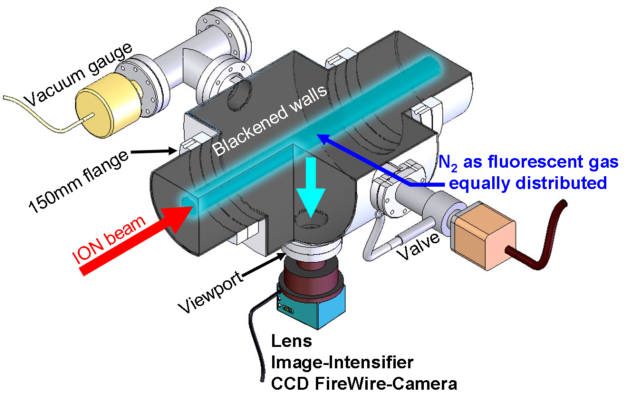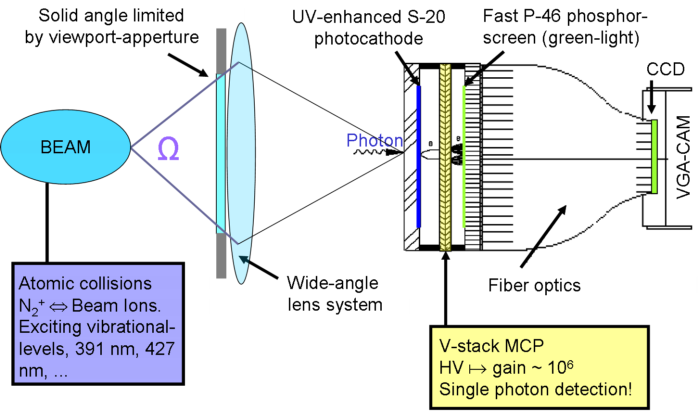Beam Induced Fluorescence Monitor - Overview
Kurzanleitung: Download
Christiane's slides form Jülich Meeting: vortrag_bif_jülich_2011_final.ppt.zip
Current Application - BIF-Monitor @ UNILAC
Current Research - Overwiev
Current Research - Profile Quality
Technical Drawing - Calibration Target
Technical Drawing - Camera Mounting and Covering
Technical Drawing - Diagnostic Box UNI-DK 1130
Technical Drawing - Assembly Drawings
Technical Drawing - Linear Feedthrough UNI-DL 1140

Schematic drawing of the BIF-monitor as installed at GSI UNILAC
When beam ions collide with residual gas molecules, some molecules are ionized remaining in an excited state with a certain probability. In a N2-dominated residual gas composition, a strong fluorescence at 390 nm < lamda < 470 nm (blue), of about 60 ns lifetime, is generated by a transition band to the N2+ electronic ground state. Since the actual amount of photons is limited by the convolution of gas- and beam density as well as the viewport apperture is limited, single photon detection is an important issue:

BIF detection principle - How the beam induced fluorescence light is imaged, intensifiend and detected